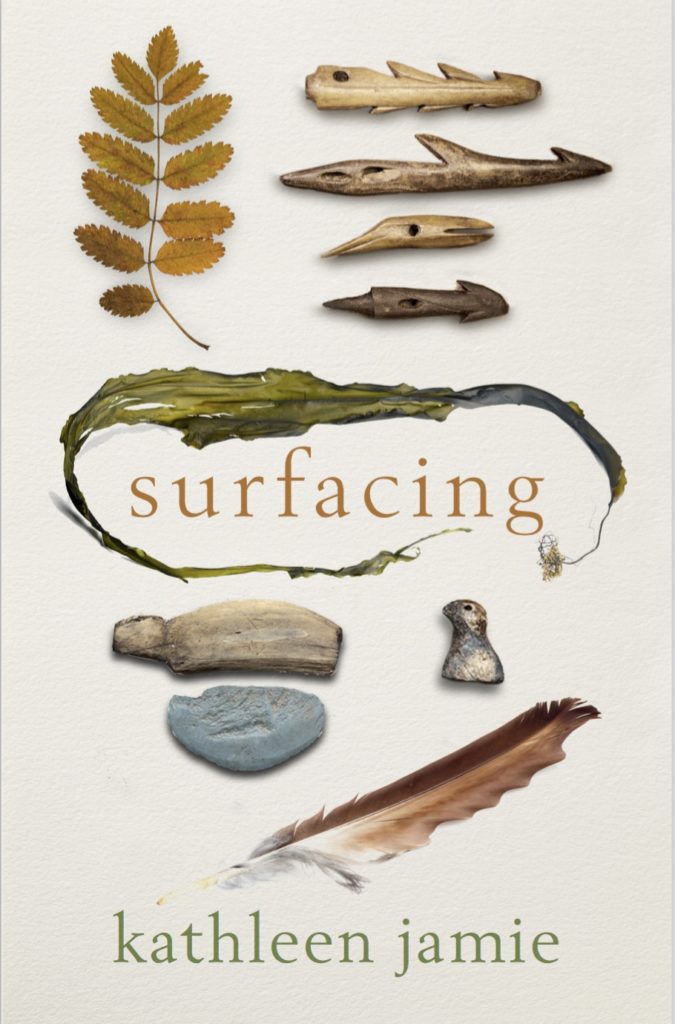Read an extract from ‘In Quinhagak’, taken from Kathleen Jamie’s new essay collection Surfacing – our Book of the Month for September, published today by Sort of Books.

The landscape was astonishing. There was nothing I wanted to do more than sit quietly and look at it, come to terms with its vastness. At lunchtime, while the others ate in the mess tent, I wandered along the beach a short distance away from the site and sat on a clump of earth new-fallen from the tundra. The sand was damp and dark grey, but the sea had vanished. In its stead lay a silent, shining realm. Almost to the horizon, and for miles north and south, lay silver mudflats, with the sky reflected in shallow pools. The sky held every sort of cloud, every season, and through gaps in the cloud a dreamy turquoise I’d never seen before.
I hadn’t imagined it would be silent. Before I came I’d imagined waves and rocks, like the coast of north-west Scotland, tides and wind. Not this silver and silent reach. There were phantasms out there: wavering and floating forms. A flock of small waders flew low over the mudflats, settled again. Through binoculars, I saw a crimped edge on the horizon, which might have been waves.
Sea, and land. Southward, it might have been miles away, a long spit of land reached out to sea, mere brushstrokes of greens with hints of fawn. Further yet, a range of mountains, just visible through a haze. On the spit, however, a shape caught my eye and, having seen it, I couldn’t not look, because I was certain it was a living creature.
In a place with no rocks and no trees, the shape sat squarish, dark, prominent.
I stood on top of the clump of earth and trained the binoculars. Even so, the animal was at the edge of my vision. How many miles away, I couldn’t say. Now I was fixated, waiting for the moment the creature moved and revealed its nature. It could be a woman picking berries, as it was berry season. Perhaps even a bear. We had been warned against walking down that way, alone. They kept a gun at the site, just in case. I wanted this distant creature to be a bear. It was surely large enough. A bear eating berries on the tundra – how thrilling! I watched till my eyes strained. But then, after long minutes, my woman-or-bear spread two black wings and took to the air. A raven! A raven, visible as an event on the landscape. I laughed at myself. Clearly, there was work to do with scale. One had to make allowances for this extraordinary light. But then again, maybe it showed how readily, in this unfixed place, the visible shifts. Transformation is possible. A bear can become a bird. A sea can vanish, rivers change course. The past can spill out of the earth, become the present.
*
Surfacing by Kathleen Jamie is published in hardback by Sort of Books. Buy a copy, priced £12.99, here.